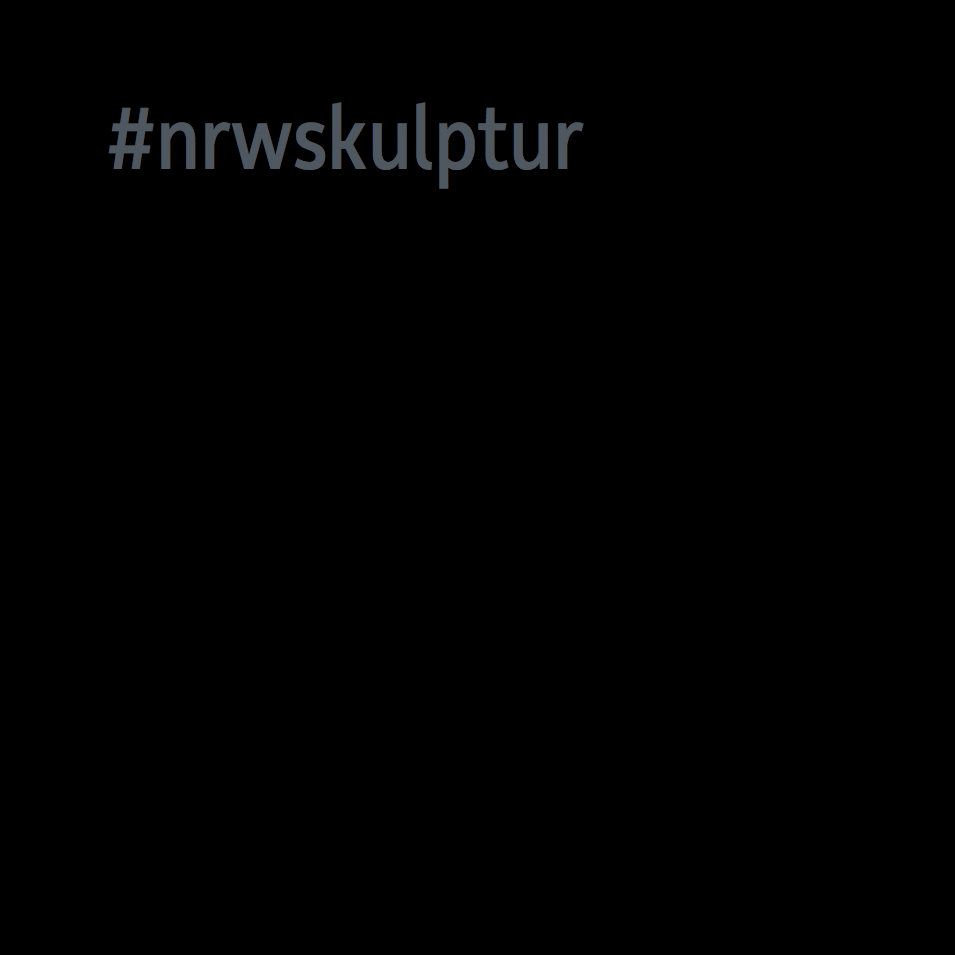Das gegenläufige Konzert / Concert in Reverse
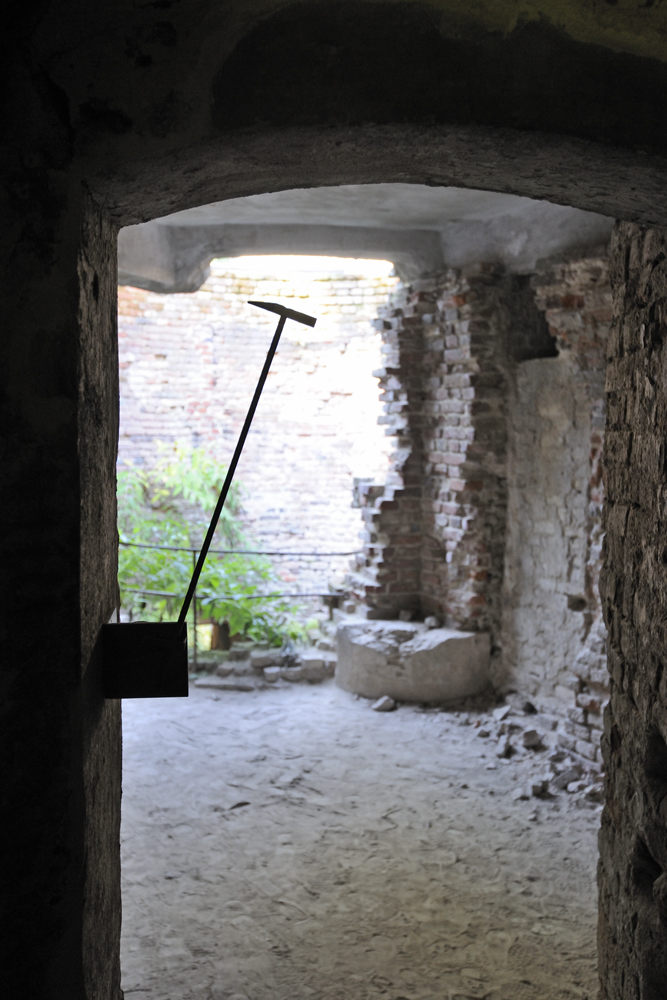
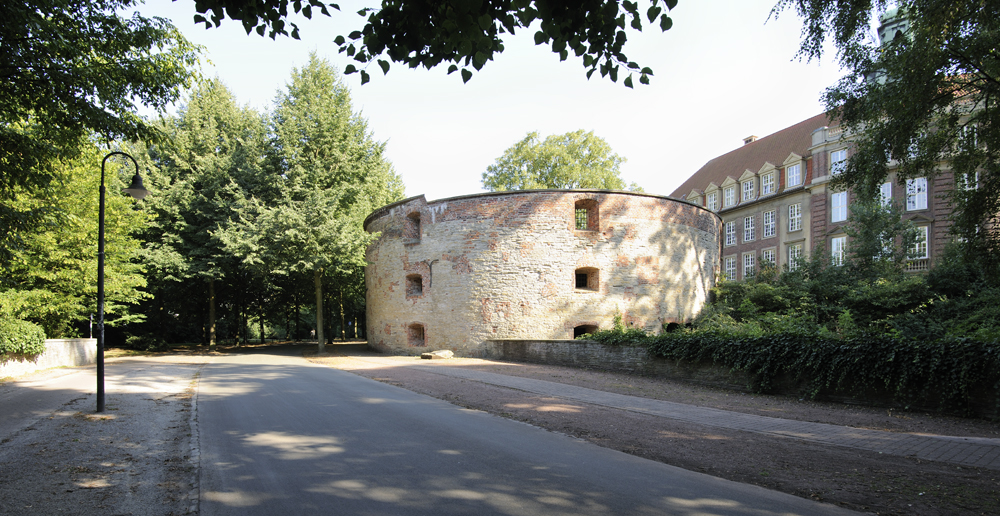
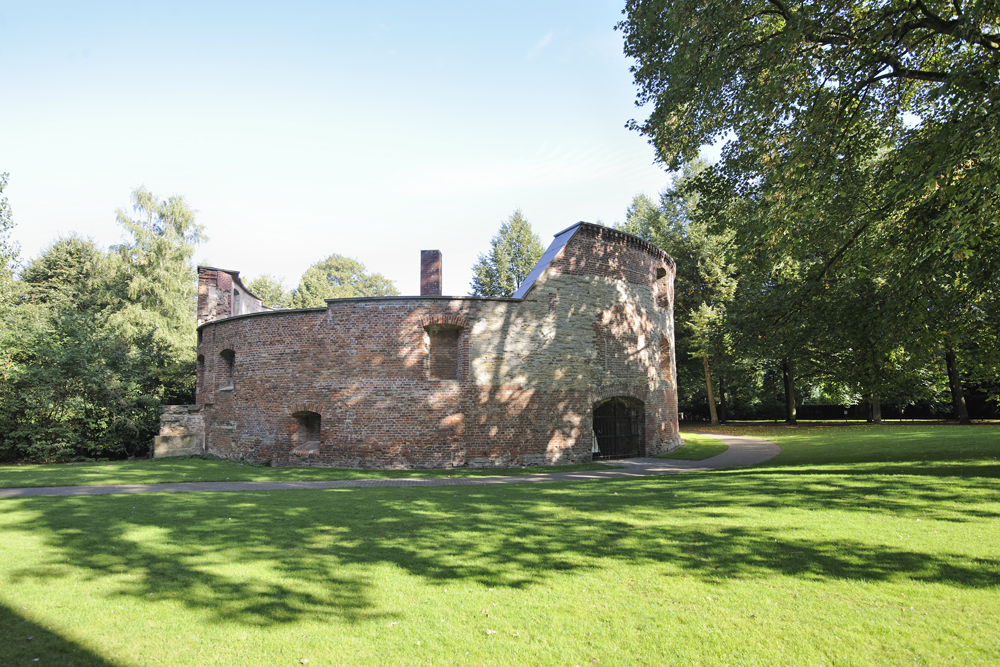
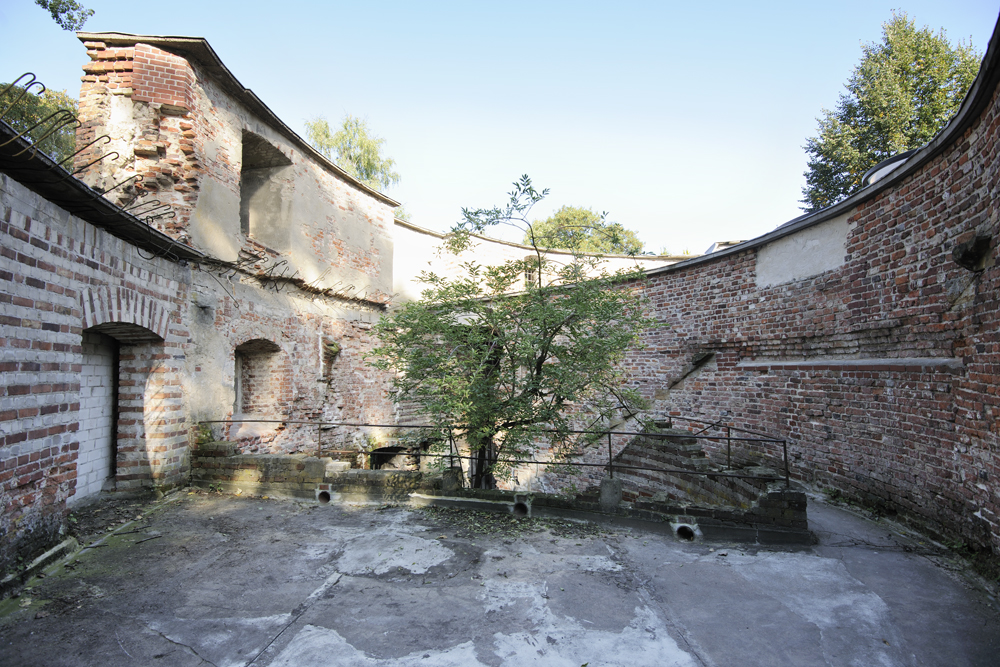
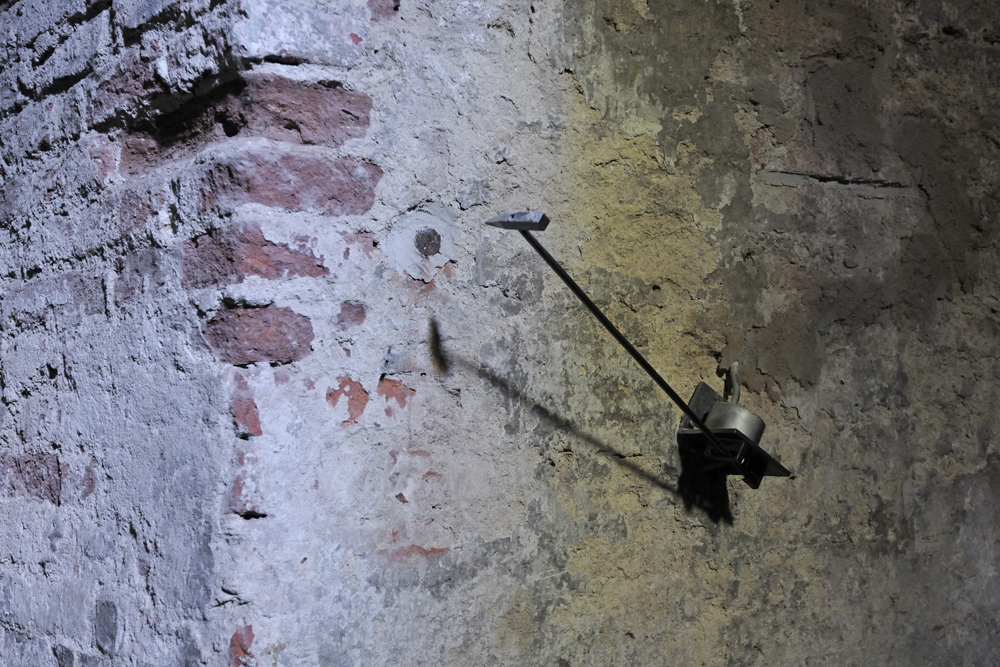
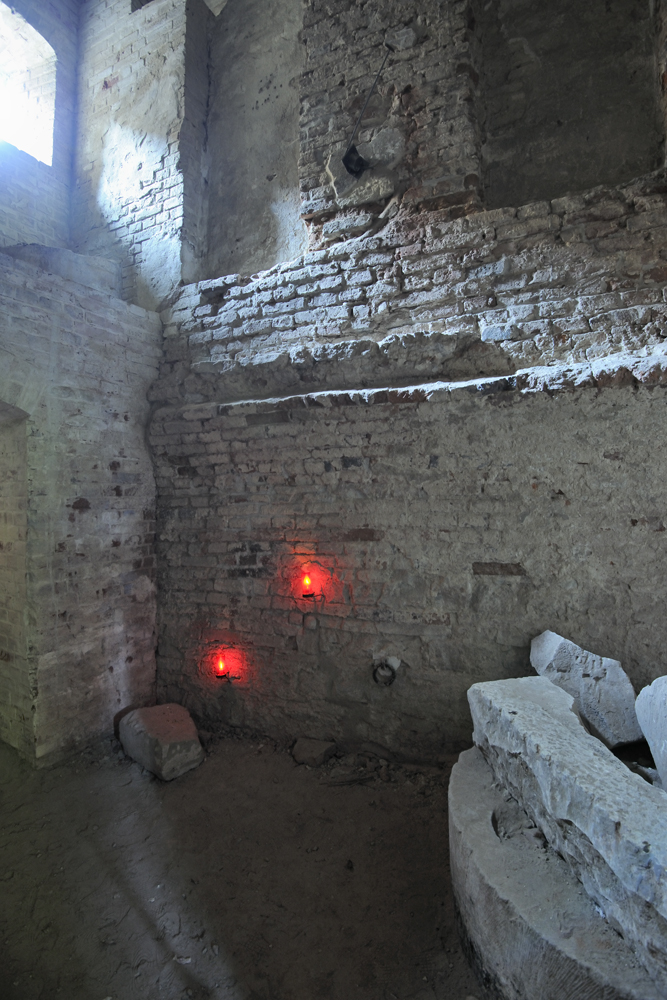
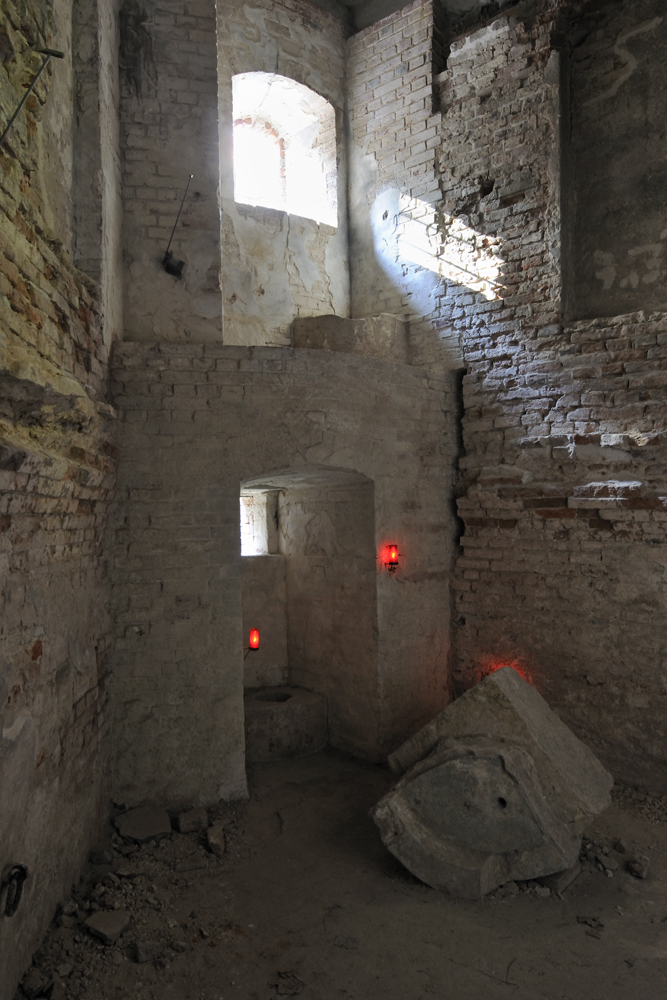
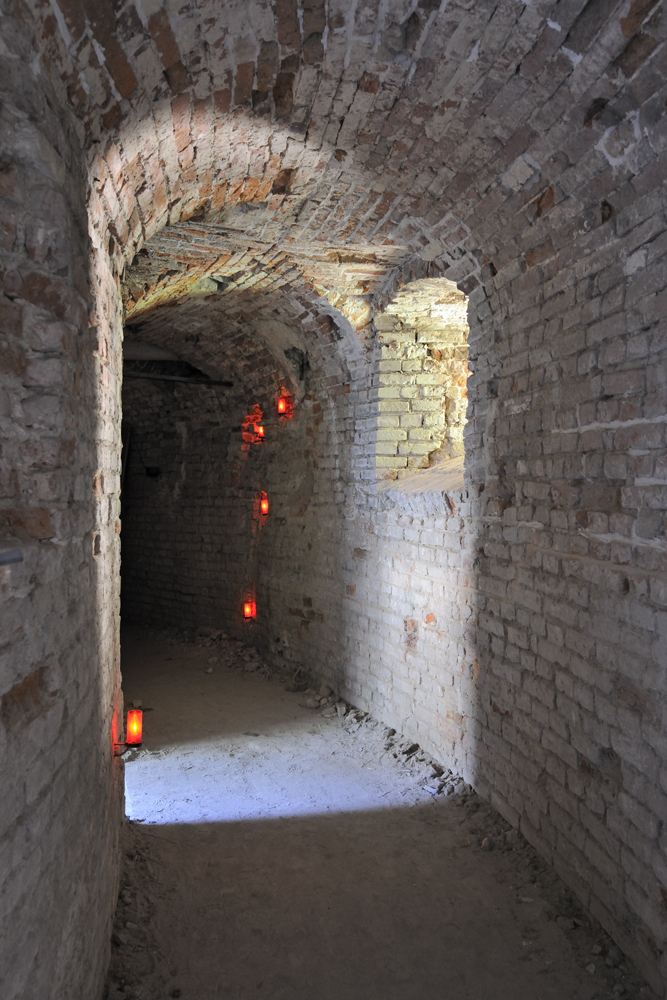
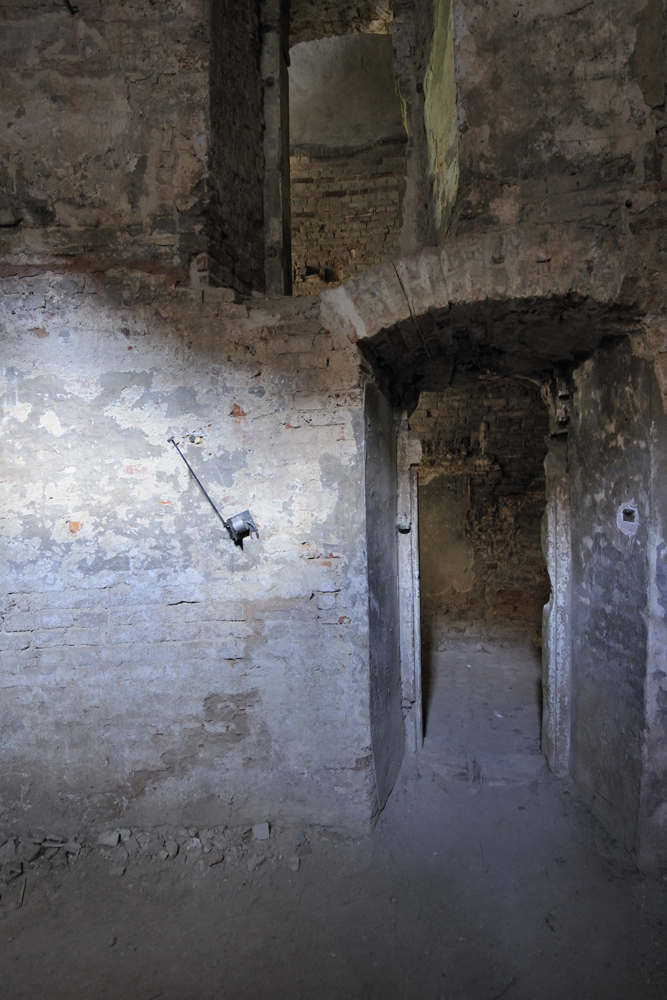
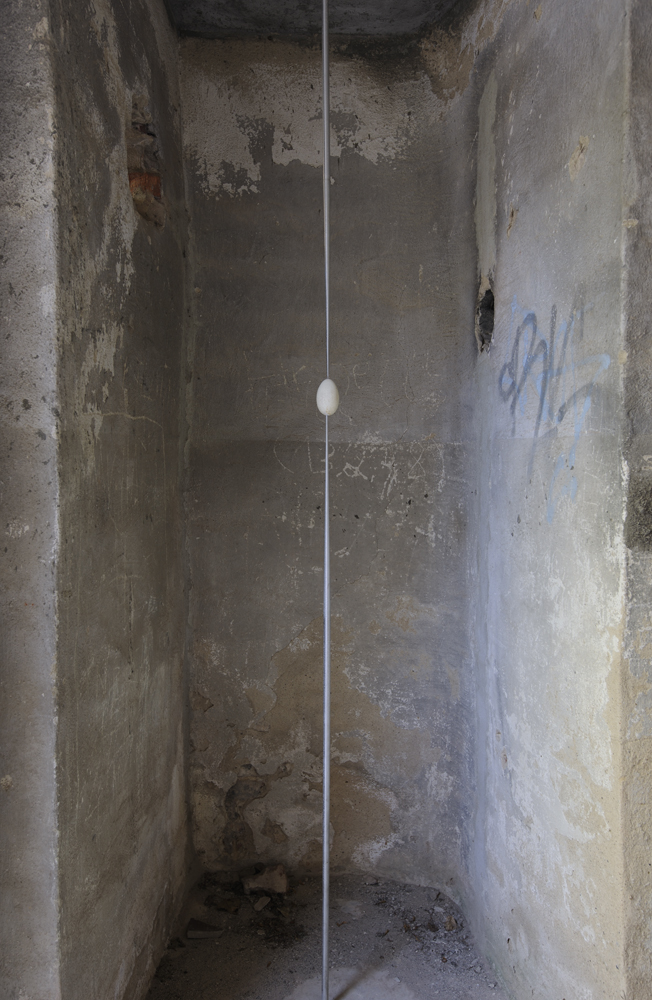
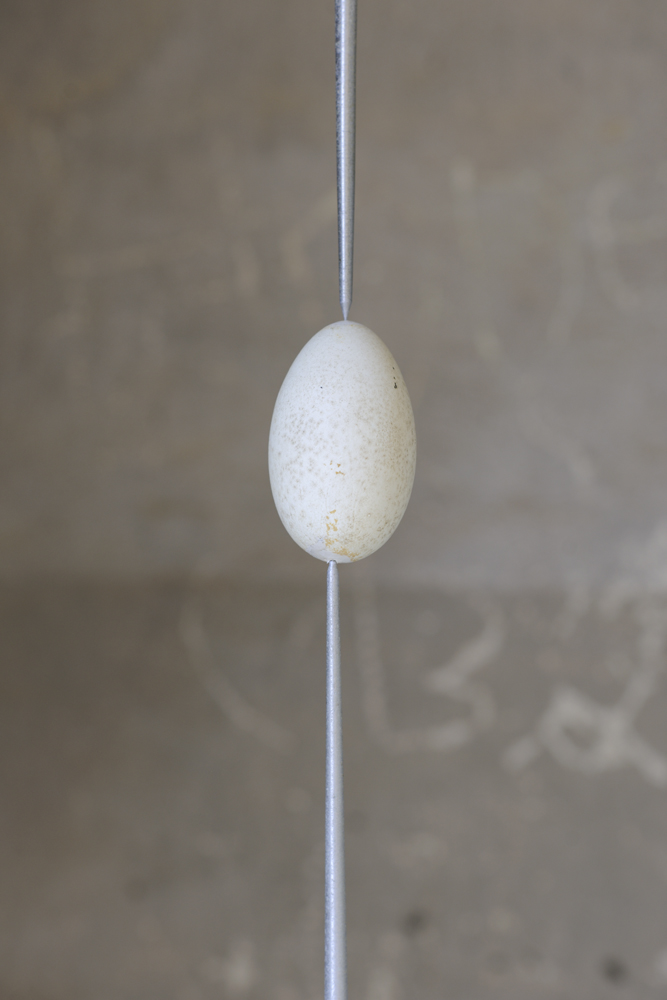
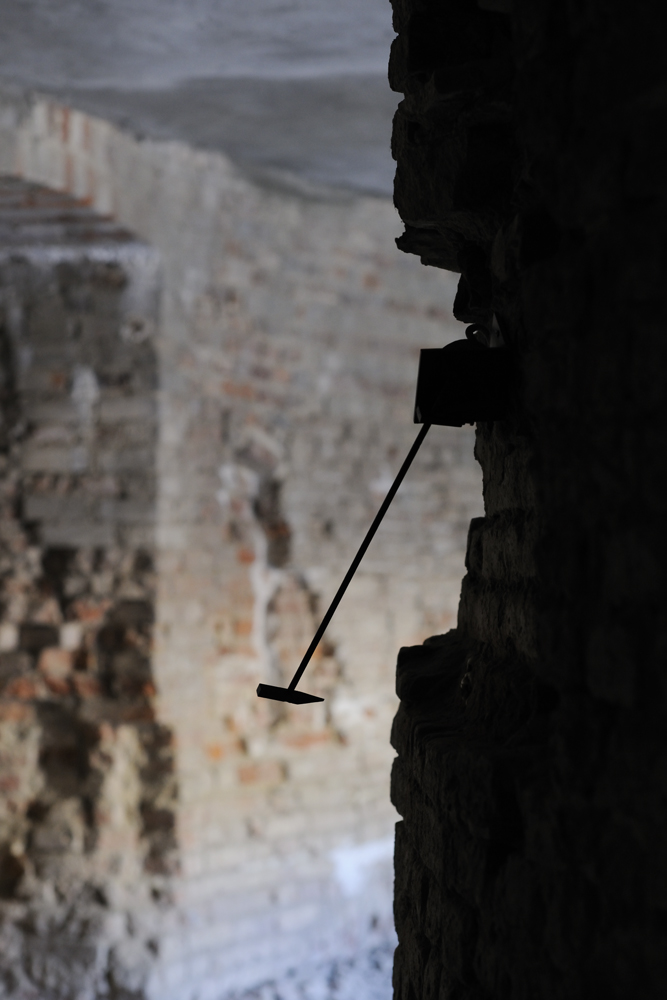
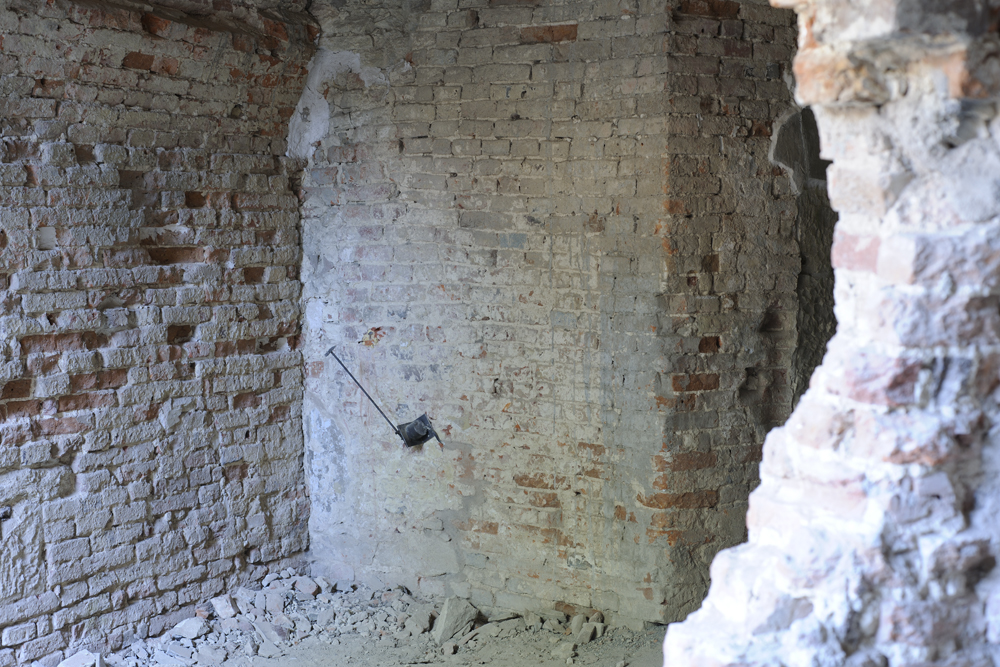
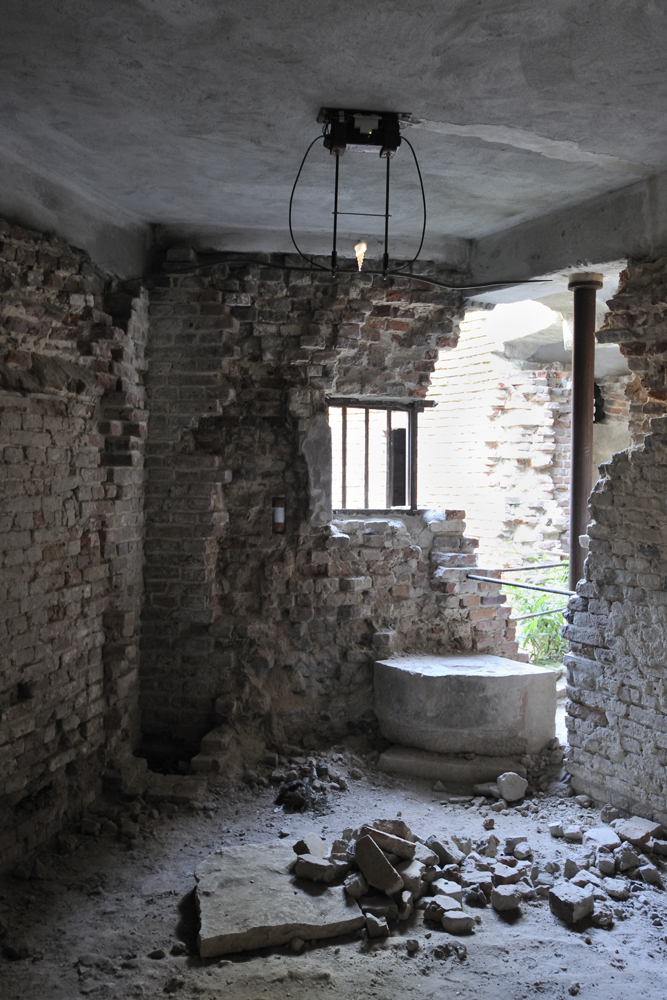
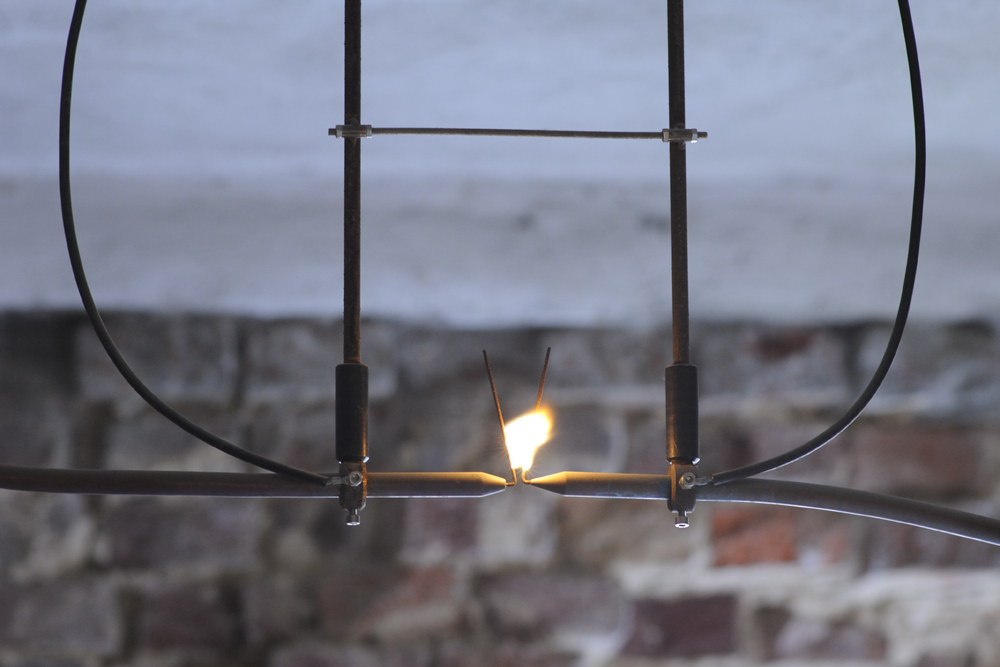
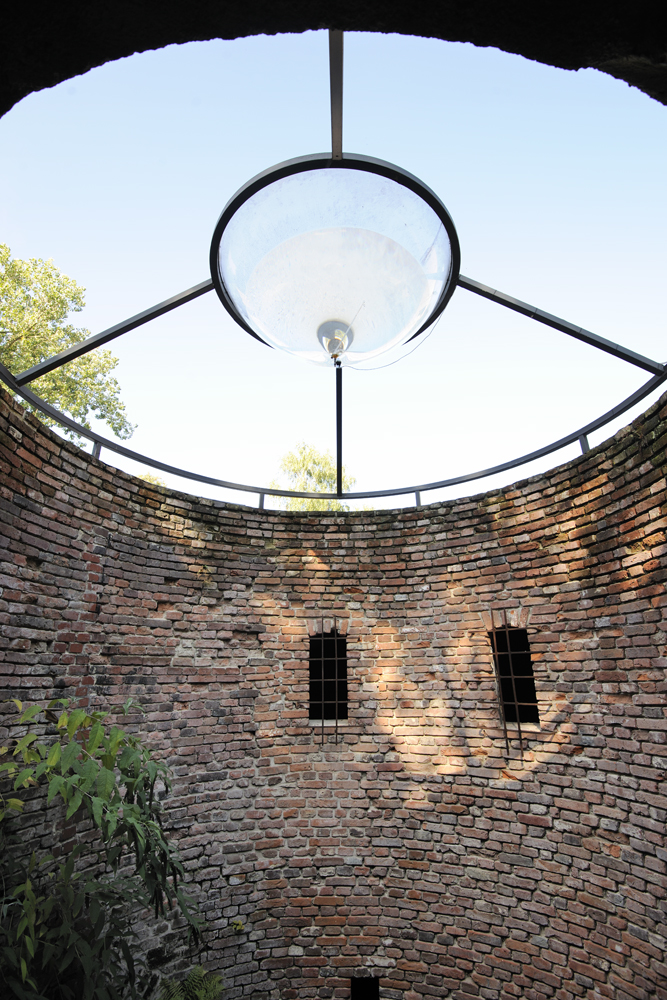
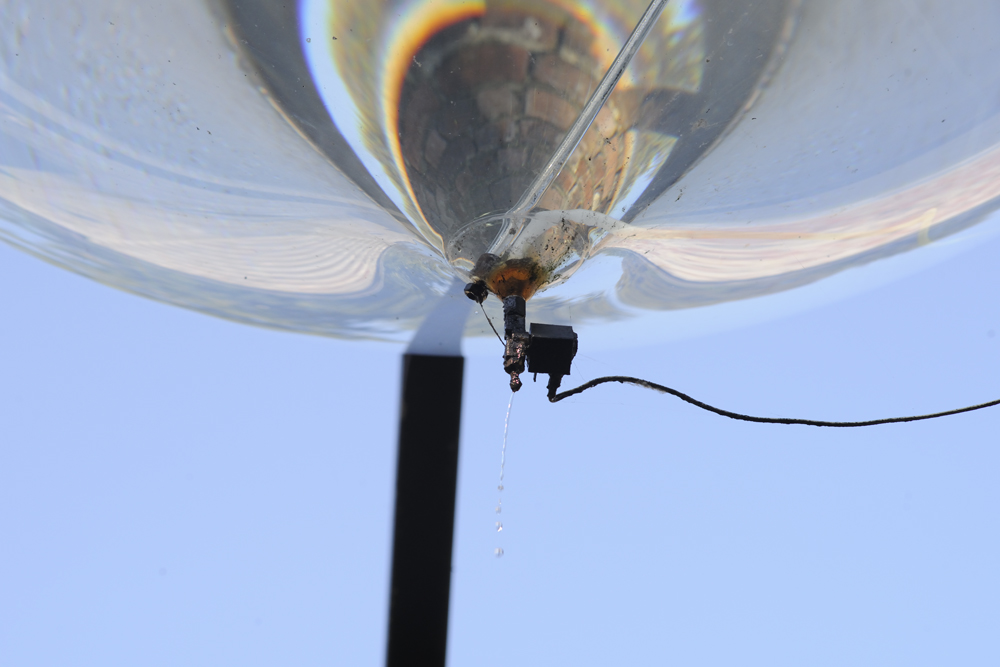
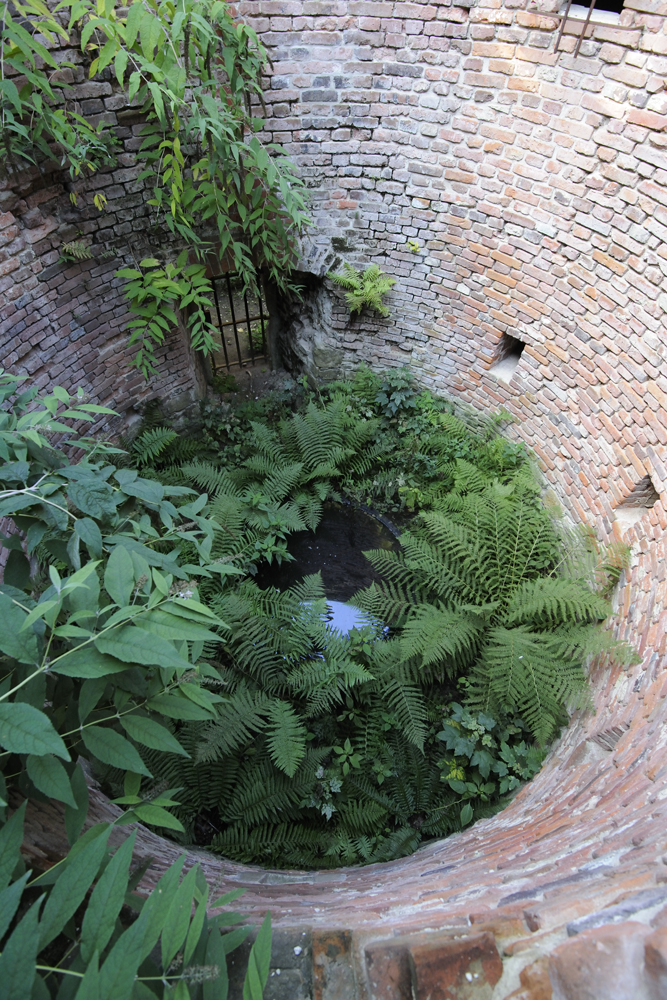
With her 1987 installation at the Zwinger municipal tower, Rebecca Horn drew attention to a building that had been long forgotten, but was actually one of the most historically interesting structures in Munster. The defensive tower was built between 1528-1536, replacing another building as part of the city fortifications. In the 17th century, it served as a horse-driven mill and a powder store. In 1732, the building was reconstructed based on plans by Johann Conrad Schlaun, becoming a prison with the cells surrounding a circular court.
At the end of the 19th century, the prison was shut down. The building had already been given landmark status when the city acquired it again in 1911 and put it to use for emergency housing. It was handed over to the Hitler Youth in 1938 and changed hands once more when the Gestapo moved in during the later years of the war and executed Polish and Russian prisoners in the small courtyard. Towards the end of the war, bombs destroyed the roof and courtyard, and the building was shut down by the city after losing all useful function. However, the interior remained exposed to the elements and plants began to grow inside.
Rebecca horn rediscovered the location and opened it up to the public, creating an atmospherically dense installation that reflects its long and varied history. After entering the damp, dark interior – which is dimly lit by flickering lights – visitors hear knocking sounds in staggered rhythms. This knocking is produced by small steel hammers that are mounted on the walls and ceilings of the cells and corridors. From upstairs, there is a clear view of the overgrown courtyard. A large glass funnel hangs between the trees, dripping water into a metal basin below at twenty-second intervals. This creates a second, opposing rhythm. The scene is supplemented by a pair of snakes in a glass terrarium and a goose egg balanced on two bars.
The entire installation allows for numerous associations that are enhanced by an awareness of the history of the place. Above all, the artist has created an atmosphere that makes the ambiguities of horror and fascination, life and death, art and nature, history and present immediately emotionally tangible. The installation was created for the 1987 Skulptur Projekte and reinstalled with some changes for the following show in 1997 on behalf of the city of Munster.
After the Zwinger’s restoration and updates to the artwork, the ruins were turned into a memorial for the victims of violence in 1997. The Zwinger has been open to the public as a branch of the Stadtmuseum Münster since 1998.
Note: It can only be visited with advance registration at the Stadtmuseum Münster or as part of a tour.
Further reading:
Rebecca Horn: Der Zwinger in Münster, Cologne 2003.
Skulptur-Projekte 1987 in Münster, eds. Klaus Bußmann and Kasper König, Cologne 1987, pp. 133–136.
Skulptur-Projekte in Münster 1997, eds. Klaus Bußmann, Kasper König and Florian Matzner, Ostfildern 1997, pp. 218–221.
Barbara Rommé (ed.): Der Zwinger: Bollwerk, Kunstwerk, Mahnmal. Aschendorff, Münster 2007.
Additional information: www.muenster.de/stadt/skulpturen/zr_flash.html
Viewings/tours: www.muenster.de/stadt/museum/zwinger.html
Rebecca Horn
← Zur Startseite
Münster, Zwinger, Neubrückenstraße
